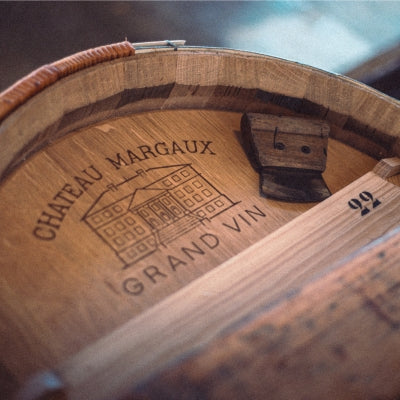
Oak and barrel maturation: types of wood
In the first part of our series on oak and barrel maturation, Westgarth Wines wine specialist Maurizio Broggi looks at the different types of wood and how they affect the wine during the aging process.
Wooden barrels have been used in winemaking since at least Roman times, and for centuries they have been the ideal solution to store and transport wine. Though their usage declined significantly with the adoption of concrete in the 19th century and the widespread usage of stainless steel tanks in the 20th century, they still play an essential role in winemaking today.
Red and white wines from Bordeaux, Burgundy, Barolo, Rioja, and Napa are just a handful of styles intrinsically linked to wooden barrel maturation, and the choice of barrels is a critical consideration for winemakers given their impact on the final style and quality of the wine.
Wood types
Oak is the most commonly used wood for barrel making. Oak is hard yet flexible, making it malleable and easy to work with. Additionally, it is watertight and relatively lightweight. Oak’s strong affinity with wine translates into positive sensory attributes. Maturation in oak barrels allows for slow oxygenation, softening the wine and promoting its evolution. It also imparts tannins, texture, and attractive oak flavors such as vanilla, clove, smoke, and coconut, which complement the wine’s organoleptic profile.
While other types of wood, such as acacia, cherry, and chestnut are available options, presenting varying levels of influence on the wine, oak barrels remain the most popular choice for winemakers due to their ideal combination of flavors and storage properties.
Oak species
Oak trees belong to the genus Quercus. There are hundreds of oak species, which can be broadly classified into two categories: white oak and red oak. Red oak is too porous to be used for barrels; thus, white oak is the preferred type of wood for wine barrel making. Within the white oak category, three species are commonly used for barrels: Quercus petraea (or sessiflora), Quercus robur, and Quercus alba. Each one of these three species has specific characteristics and affects wine differently.
Quercus petraea has a tight, fine grain and is prized for its high levels of attractive aromatic compounds such as vanilla and clove. Its contribution in terms of tannins and structure is lower than that of Quercus robur. Quercus robur with its coarser grain and fewer aromatics compared to Quercus petraea, provides more structure and fewer aromatic compounds. Quercus alba, an American oak, is denser and offers a less tannic structure, containing significant concentrations of oak aromatics, particularly lactones that lend a characteristic coconut note.
The type of grain is an important oak parameter, as it affects the exchange between oak and wine. A tighter grain (as in Quercus petraea) may result in lower levels of micro-oxygenation and fewer tannins. Conversely, a coarser grain (as in Quercus robur) may lead to greater micro-oxygenation and more tannins.
Oak origin
While oak species affect aromatics, tannin content, and micro-oxygenation, the provenance of oak has an even greater impact on these parameters. Provenance is directly influenced by where and how oak trees grow. For instance, in more continental and cooler climates or less fertile soils, growth slows down, resulting in a tighter grain. Consequently, coopers tend to prioritize oak selection based on origin, grain size, and overall quality rather than distinguishing between specific oak species.
American Oak
Because of the importance of oak’s geographic origin, it is common to discuss oak barrels in terms of provenance rather than oak species. Quercus alba is indigenous to the USA which is why it is commonly referred to as American oak. It is sourced in the midwest and eastern states of Kentucky, Tennessee, Missouri, Minnesota, Pennsylvania, and Wisconsin among other states. American oak is historically associated with the wines of Rioja and traditionally used for wines such as Shiraz in Australia and Zinfandel in California.
European Oak
Both Quercus petraea and Quercus robur are grown across Europe and are referred to as European oak. French oak accounts for about half of the total European oak used in winemaking and it is considered of the highest quality. It is sourced principally in the forests of Nevers, Alliers, Tronçais, and Vosges; known for being predominantly made of Quercus petraea. Quercus robur is also found in France, notably in the forest of Limousin.
High-quality European oak is also produced in Hungary, Croatia, Russia, and Austria, among other European countries. Hungarian oak (mostly Quercus petraea) is sourced from the forests in the Carpathian Mountains, and it is known for providing texture, weight, and refined tannins. Slavonian oak (typically Quercus robur) is sourced mainly in the northeast of Croatia; it is known for its coarser grain, which provides optimal micro-oxygenation and more subtle oak aromatics. Slavonian oak is especially favored by Italian producers in the classic regions of Piedmont, Veneto, and Tuscany, where red wines such as Barolo, Amarone della Valpolicella, and Brunello di Montalcino are traditionally aged in large casks of Slavonian oak.
Want to read more? Take a look at some of our other blogs:
Also in News



